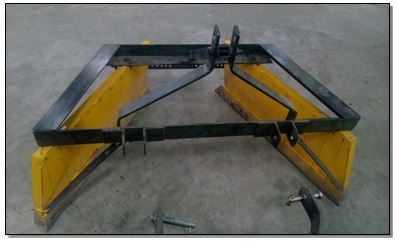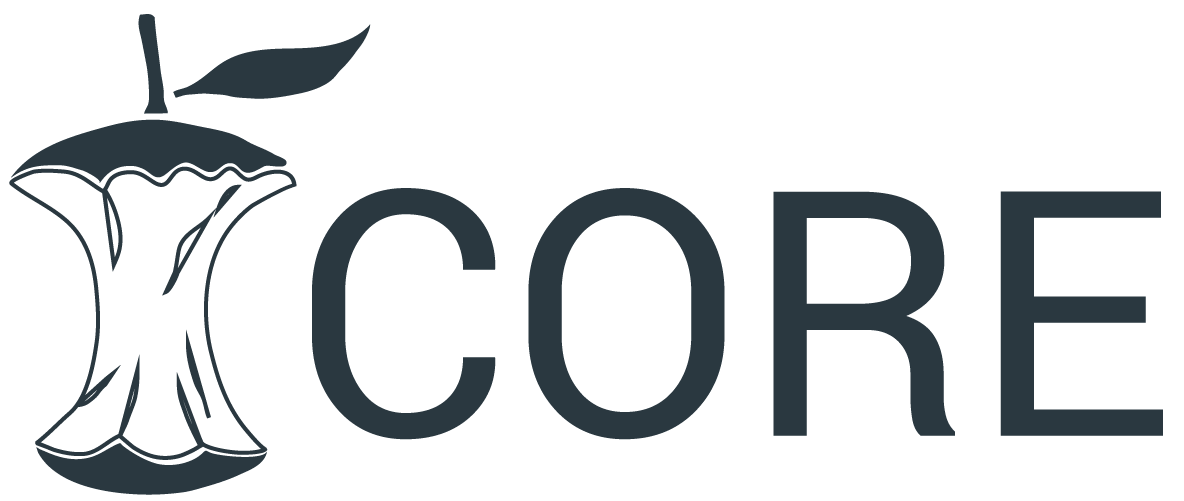Small Tractor Drawn Broad Bed Furrow Maker
DOI:
https://doi.org/10.5281/zenodo.15655530Keywords:
farm mechanization, bund former, bed making deviceAbstract
During preparation of sowing season, there is an acute shortage of labour, which causes delay in sowing of crop which ultimately results in a reduction in yield Bed making operation is one of the important tillage operations which control water logging problem which reduce the crop yield. There is a need of such machine which overcome the economic constraints of farmer and can perform bed making operation. Another limitation is that about 90 percent of farmers fall in the category of marginal, small and semi-medium land holding. They could not offer heavy price of big tractors and implements. Big tractors operated machineries are not suitable for small and scattered land holdings since it gives low field efficiency in small fields. Field efficiency of Broad bed furrow maker was about 77 %, more than that of manually bed making method. The working of bed making mechanism was satisfactory and desirable height of sowing was obtained.
Downloads
References
Anonymous. (1987). Cultivation practices for groundnut production in India. Training workshop on production technology of rabi groundnut in india. ICRISAT, Pantnagar, pp. 7-26.
AstatkeA, Jabbar M, Mohamed MA, & ErkossaT. (2002). Technical and economical performance of animal drawn implements for minimum tillage experience on vertisols inethopia. Experimental Agriculture, 38(2), 185-196.
Astatke, A., Jabbar, M.A. Mohamed Saleem, M.A., & Erkossa, Teklu. (2002). Development and testing of low-cost animal drawn minimum tillage implements: Experience on Vertisols in Ethiopia.
Ahmad, R. N., & N. Mahmood. (2005). Impact of raised bed technology on water productivity and lodging of wheat. Pakistan Journal of Water Resources, 9(2), 29.
Akbar, G., G. Hamilton, Z. Hussain, & M. Yasin. (2007). Problems and potentials of permanent raised bed cropping systems in Pakistan. Pakistan Journal of Water Resources, 11(1), 11-21.
Baker & Thomas. (1997). Irrigation furrow and raised seed bed forming machine. United State Patent No.5318134.
Bari. (1999). Design and development of multicrop, broad bed furrow maker. Journal of Agricultural Engineering, 28(12), 323-332.
Beeny JM. (1973). Rotary cultivation of wet rice land-comparison of blade shape. J. Agric. Engg. Res, 18, 249-251.
Beeny JM, & Khoo DCP. (1970). Preliminary investigations in to the performance of different shaped blades for the rotary tillage of wet rice soil. J. Agric. Engg. Res., 15(1), 27-33.
Bhusari CS, Jadhav RV, & Lende AB. (1997). Development and performance evaluation of bullock drawn broad bed former cum groundnut planter. Unpublished M.Tech Thesis MPKV, Rahuri India.
Biwas HS. (1993). Performance evaluation and optimization of straight blades for shallow tillage and weeding in black soils. AMA, 24(4), 19-22.
Biswas HS, & Yadvas GC. (2004). Animal drawn weeding tool for weeding and Interculture in black soils. Agricultural Engineering Today. 28(1-2), 47-53.
Deshmukh RG, & Patil VV. (1992). Design and development of broad bed former. Agricultural Engineering Abstracts, I, 10-69.
Jena S, & Sharma DN. (2009). Improved tractor drawn multicropridger seeder-cum-seed fertilizer drill. XLVI Annual Convention and Symposium of ISAE, New Delhi, pp. 28-40.
Ju Js. (1997). Evaluation of the usability of the welding Nickel-Base alloy on the tillerblade. Journal of National Chiayi Institute of Agriculture, 51, 67-82.
Kukal, S. S., E. Humphreys, Y. Singh, J. Timsina, & S. Thaman. (2005). Performance of raised beds in rice-wheat systems of northwestern India.
Khurmi, R., & J. Gupta. (2003). A text book of machine design. New Delhi: India: Eurasia Publishing House (Pvt.) Ltd.
Khurmi, R.S., & J. K. Gupta. (2012). A text book of theory machines. New Delhi: India: Eurasin Publishing House Pvt. Ltd., pp. 232-257.
Khambalkar, V. P., S. M. Nage, C. M. Rathod, A. V. Gajakos, & Shilpa Dahatonde. (2010). Mechanical sowing of safflower on broad bed furrow. Australian Journal Agricultural Engineering 1(5), 184-187.
Khambalkar, V. P., N. N. Waghmare, A. V. Gajakos, D. S. Karale, & U. S. Kankal. (2014). Performance of broad bed-furrow planter in winter season of dry land crops. International Agricultural Engineering Journal, 23(1), 14-22.
Kosutic S, Filipovic D, & Gospodaric Z. (1996). Rotary cultivator energy requirement influenced by different constructional characteristics, velocity and depth of tillage. Poljoprivrednaznanstvena-smotra, 61(3-4), 70.
Dabhi,K.L.,Godhani,R.S., & Swarnkar, R. (2016). Comparative performance of mini tractor drawn tillage implements for seed bed preparation under sandy loam conditions of middle. Gujarat Internet. J. Agric. Engg., 9(1), 53-61.
Dubey UC, & Dubey AK. (2007). Performance evaluation of animal drawnbed drill and bed planter on raised bed for irrigated vegetable cultivation. XLI Annual Convention & Symposium at Junagadh, ISAE.
Farm Mechanization in India. (2013). Mechanization and Technology Division, Dept. of Agriculture and Cooperation Ministry of Agriculture.
Gill, & Berg. (1968). Soil dynamics in tillage and traction. Agriculture Research Service, United States Department of Agriculture, pp. 264-270.
Indian Standard: IS 12334. (1988). Tractor mounted bund former [FAD 21: Farm Implements and Machinery].
Indian Standard: 226-1975. Test code for estimating cost of farm machinery.
Mandhar SC, & Hebbar SS. (2008). Design and development of raised bedformer cum transplanter and planter for chilli and other vegetable crops. XLII Annual Convention and Symposium, ISAE, pp. FPM-6.
Mandal S., Maity A., Prasad A., Maji P., & S. Karmakar. (2015). Design & development of a suitable implement matching with low HPTractor. International Research J. of Engg. and Tech., (2), 538-542.
Manian R, Nagaiyan V, & Kathirvel K. (1999). Development and evaluation of combination tillage-bed furrow former. AMA 30(4), 22-29.
Mehta M. L., Verma S. R., Mishra S. R., & V. K. Sharma (2005). Testing and evaluation of agricultural machinery. Daya Publishing House.
Pail. S.B., R.C. Salunkhe, S.K. Jadhav, & S.S. Patil. (2009). Evaluation for cost effective combination of different seed bed preparation implements with large size tractors. International Journal of Agricultural Engineering, 2, 212-215.
Punamchand R., Spakale, Tiwari G., Ajay, & K. Sharma (2016). Influence of surface hardening processes on wear characteristics of soil working tools- A review. International J. Engg. Sci. & Tech., 8(4), 191-201.
Rutherford AS. (2008). Broad bed maker technology package innovations in Ethiopian farming systems: An ex post impact assessment. Research Report 20. ILRI(International Livestock Research Institute), Nairobi, Kenya, pp. 89.
Sahay J. (2006). Elements of agricultural engineering. Standard Publishers Distributors.
Sing.S.P., Solanki., Singh.M.K., & Kanhaiya Singh. (2016). Development of tractor operated bund former-cum-packer for increasing resource productivity. Indian Journal of agricultural Sciences, 86(9), 1121-6.
Sharda A., & Singh S. (2004). Effect of selected parameters on field performance of Rotary tiller. IE (I) Journal AG, 85.
Singh. S., & Habibi. AJ. (2007). Computer–aided development of rotary blades for strip tillage. Journal of Agricultural Engineering, 44(3).
Sharma, N. D., & S. Mukesh. (2008). A text book farm machinery design principles and problems. Jain Brothers.
Smith HP, & Wilkes LH. (1977). Farm machinery and equipment. (6th ed.). Tata McGraw Hill Publishing Co. Ltd., pp. 183-191.
Srinivas I. (2005). Mechanization options for alternate land use and resource conservation. Central Research Institute for Dryland Agriculture, pp. 233-38.

Published
How to Cite
Issue
Section
ARK
License
Copyright (c) 2025 V. P. Khambalkar

This work is licensed under a Creative Commons Attribution 4.0 International License.
Research Articles in 'Applied Science and Biotechnology Journal for Advanced Research' are Open Access articles published under the Creative Commons CC BY License Creative Commons Attribution 4.0 International License http://creativecommons.org/licenses/by/4.0/. This license allows you to share – copy and redistribute the material in any medium or format. Adapt – remix, transform, and build upon the material for any purpose, even commercially.










